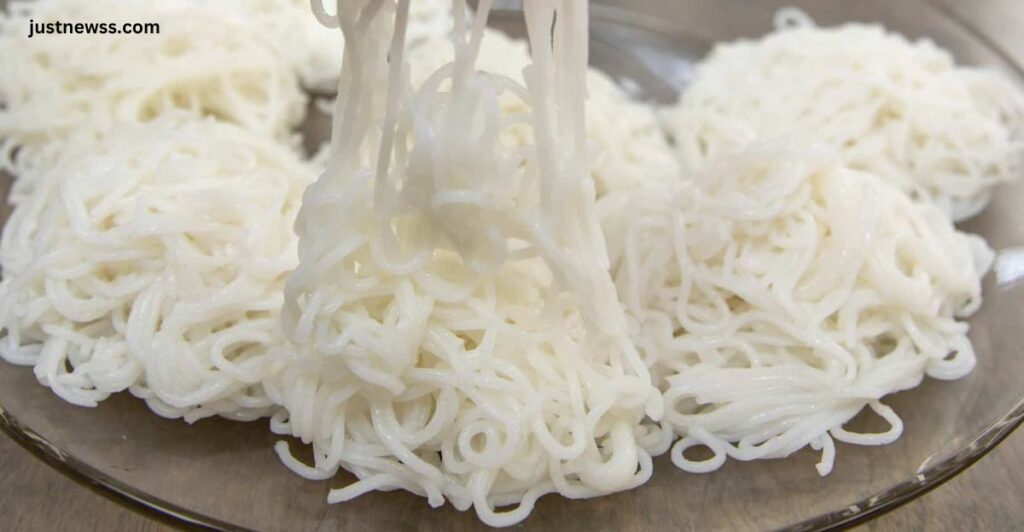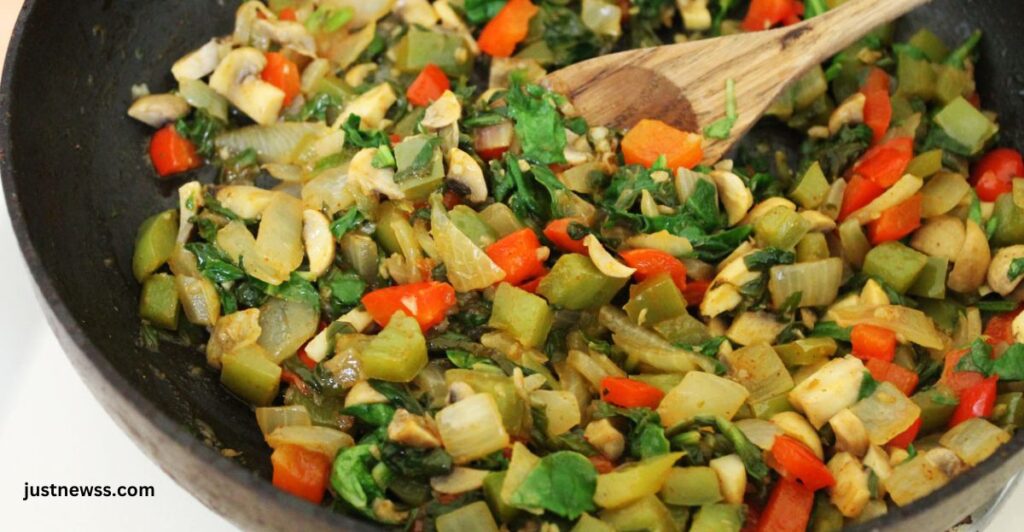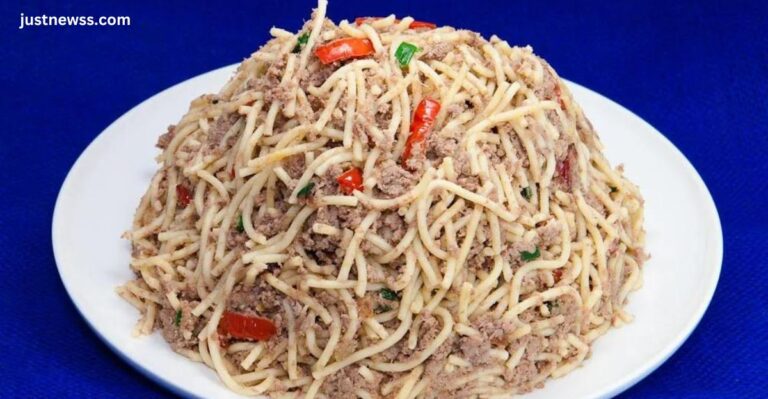Singapore noodles, with their vibrant colors and enticing flavors, are a staple in many Asian cuisines. Although traditionally made with shrimp or chicken, a vegetarian version of this dish can be equally delightful. Our recipe for Vegetarian Singapore Noodles is not only delicious but also easy to prepare, making it a perfect meal for both weeknight dinners and special occasions. Let’s dive into the details of creating this mouth-watering dish.
Ingredients Needed for Vegetarian Singapore Noodles
To prepare the best Vegetarian Singapore Noodles, you will need the following ingredients:
- Vermicelli Rice Noodles: 200 grams
- Vegetable Oil: 2 tablespoons
- Garlic: 3 cloves, minced
- Ginger: 1 tablespoon, finely chopped
- Red Bell Pepper: 1, thinly sliced
- Yellow Bell Pepper: 1, thinly sliced
- Carrots: 2, julienned
- Snow Peas: 100 grams, trimmed
- Green Onions: 4, chopped
- Cabbage: 200 grams, shredded
- Bean Sprouts: 150 grams
- Firm Tofu: 200 grams, cut into small cubes
- Soy Sauce: 3 tablespoons
- Curry Powder: 2 teaspoons
- Turmeric Powder: 1 teaspoon
- Chili Paste: 1 tablespoon (optional)
- Salt and Pepper: to taste
- Fresh Cilantro: for garnish
- Lime Wedges: for serving
Read More:
How to Make Ramen Noodles Recipe
Delicious Cucumber Kimchi Recipe Easy
Step-by-Step Preparation of Vegetarian Singapore Noodles
1. Preparing the Vermicelli Noodles
Start by soaking the vermicelli rice noodles in hot water for about 5-7 minutes or until they are soft. Drain the noodles and set them aside. This step ensures that the noodles are ready to absorb the flavors of the stir-fry later on.

2. Cooking the Vegetables
Heat vegetable oil in a large wok or frying pan over medium-high heat. Add the minced garlic and finely chopped ginger, sautéing them until fragrant. This will be the base flavor for your noodles.
Next, add the sliced red and yellow bell peppers, carrots, and snow peas. Stir-fry the vegetables for about 3-4 minutes until they begin to soften but still retain some crunch. This ensures that your noodles will have a variety of textures.

3. Adding Tofu and Cabbage
Introduce the cubed firm tofu to the wok, stirring gently to avoid breaking the tofu pieces. Allow the tofu to cook for about 2 minutes, soaking up the flavors from the garlic and ginger.
Then, add the shredded cabbage and continue to stir-fry for another 2 minutes. The cabbage will wilt slightly, adding to the texture and flavor of the dish.
4. Seasoning the Noodles
Now it’s time to add the soaked vermicelli noodles to the wok. Pour in the soy sauce, curry powder, and turmeric powder. If you prefer a bit of heat, add the chili paste as well. Toss everything together gently to ensure the noodles are evenly coated with the seasoning.
5. Finishing Touches
Add the bean sprouts and chopped green onions to the wok, tossing them with the noodles and vegetables. Cook for an additional 2-3 minutes until everything is heated through. Season with salt and pepper to taste.
6. Serving the Dish
Transfer the Vegetarian Singapore Noodles to a serving platter. Garnish with fresh cilantro and serve with lime wedges on the side. The lime juice adds a refreshing tang that complements the curry and soy sauce flavors.
Tips for Perfect Vegetarian Singapore Noodles
- Use Fresh Ingredients: Fresh vegetables and herbs make a significant difference in the overall taste and texture of the dish.
- Adjust the Heat: If you prefer a milder version, you can omit the chili paste or use a milder curry powder.
- Tofu Texture: For a chewier texture, consider using extra-firm tofu or lightly frying the tofu cubes before adding them to the stir-fry.
- Noodle Alternatives: If you cannot find vermicelli rice noodles, thin rice sticks or even glass noodles can be a good substitute.
Nutritional Benefits of Vegetarian Singapore Noodles
This vegetarian dish is not only delicious but also packed with nutrients:
- Vermicelli Noodles: Low in fat and calories, they provide a good source of carbohydrates for energy.
- Tofu: A great plant-based protein source, rich in calcium and iron.
- Vegetables: Bell peppers, carrots, and snow peas are high in vitamins A and C, fiber, and antioxidants.
- Bean Sprouts: Low in calories but high in vitamins C and K, folate, and fiber.
Pairing Suggestions for Vegetarian Singapore Noodles
To complete your meal, consider pairing the noodles with these delightful accompaniments:
- Spring Rolls: Fresh or fried, these make a great appetizer.
- Miso Soup: A light and flavorful soup to start the meal.
- Asian Cucumber Salad: A refreshing and crunchy side dish.
Why Choose Vegetarian Singapore Noodles?
Choosing vegetarian options can have multiple benefits:
- Healthier Option: Lower in saturated fats and cholesterol.
- Eco-Friendly: Reducing meat consumption lowers your carbon footprint.
- Versatility: This dish can be easily modified to include your favorite vegetables and seasonings.
Conclusion
Creating the perfect Vegetarian Singapore Noodles is all about balancing flavors and textures. With fresh vegetables, firm tofu, and the right blend of spices, this dish is sure to become a favorite in your household. Whether you’re a seasoned cook or a beginner, our detailed recipe and tips will help you prepare a meal that is both nutritious and delicious.






